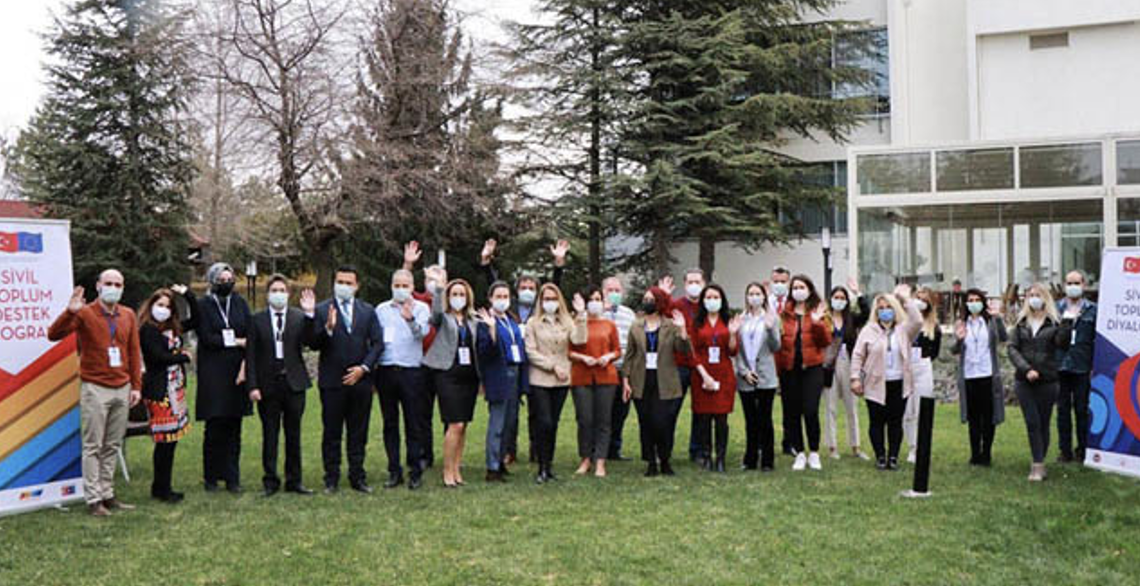Context:
- Located in South-West Asia on the Anatolian Peninsula, Türkiye has a population of 85.4 million and, according to the United Nations Population Division, the country’s youth (15—29 years of age) comprise 39.0 million people. With a GDP of over $815 billion in 2022, Türkiye is a part of the G-20 major economies and a founding member of OECD. However, International Labour Organization (ILO) data indicate that over 1.8 million youth in Türkiye were unemployed in 2021. Moreover, according to the Anatolian Youth Federation, 78 per cent of youth with disabilities were unable to join the labour force altogether.
Implementation of programme/ initiative:
- The Youth at Work Project, implemented between April 2021 and June 2022, aimed to increase the employment of youth with disabilities and support Türkiye’s accession to the European Union. There were two applicants and two partners in the project. The Anatolian Youth Federation (ANGEF), Türkiye, was the lead applicant and the
- The project was implemented mainly by the Anatolian Youth Federation. It received grant support under the sixth cycle of the Civil Society Dialogue Program by the Directorate for European Union Affairs of the Ministry of Foreign Affairs of Türkiye, with further financial support from the European Union.
- The main target groups of the project consisted of youth with disabilities between the ages of 15 and 29 in both Türkiye and Hungary, with almost half of the participants being women and girls. The project lasted for 15 months in total, and activities were carried out in both countries.
- The project provided mentoring services to increase the employability of youth with disabilities through one-to-one mentoring, utilizing the resources developed by relevant academics. In addition, technical and study visits were organized mutually between Türkiye and Hungary to exchange good practices and experiences concerning the employment of youth with disabilities.
- The facilitating factor in achieving the objectives was the sustainable and continuous dialogue between the project partners through physical and online meetings.
Main challenges:
- Although certain actions were taken to address existing prejudices towards youth with disabilities, many of the challenges remained dire, especially for women and girls with disabilities, as they were also subject to gender-based prejudice and marginalization. It was further noted that reaching out to youth with disabilities was rather challenging. Various channels were utilized, including the istegencler.org and angef.com websites, surveys published on ab-ilan.com, as well as virtual meetings via Zoom, Microsoft Teams, and WhatsApp. In terms of logistics, with ANGEF taking the lead in the activities and COMPASS making up the executive structure, having a project office located in Ankara might not have been ideal for efficient and swift collaboration throughout the project.
Results achieved:
- The issues faced by youth with disabilities in Türkiye and Hungary in terms of employment were determined through a survey with a total of 380 youth in both countries. Accordingly, by performing a SWOT (strengths, weaknesses, opportunities, and threats) analysis, a strategy document including solution-oriented recommendations was prepared. The results showed that the reasons youth with disabilities faced difficulties in finding employment were low education and skill levels, insufficient career support and prejudice.
- As part of the efforts to build capacity and increase the employability of youth with disabilities, mentoring services were provided to 100 youth with disabilities, 50 from Türkiye and 50 from Hungary, by four academic mentors, focusing on the skills and competence gaps of youth with disabilities. Mentors provided guidance on the appropriate training, documentation and resources for effective project implementation through personalized action plans. Besides assisting in the preparation of Curriculum Vitae (CVs) and arranging interviews with private employers based on their action plans, mentors also periodically monitored mentees’ progress to ensure they found employment.
- In addition to receiving mentoring support, the mentees were provided with one of the following trainings, namely: Foreign Trade, Basic Sign Language, Patient Registration and Admission Secretariat, and Computerized Accounting, according to their interests. The mentees were also included in the European volunteering and internship projects, enabling them to broaden their perspectives in an international environment and have greater opportunities to find employment.
Moving Forward:
- The meaningful contributions of persons with disabilities to society and the economy have been made abundantly clear time and time again, rendering them an indispensable asset of any given society. Despite the advantages of time and energy, youth with disabilities are yet to receive adequate consideration from relevant stakeholders to fully realize their potential. Considering the reported number of youth with disabilities, the project organizers will need to expand the coverage and increase the number of participants in order to address the issues more proportionately. For effective project implementation and successful achievement of the objectives, a more concrete follow-up procedure will also need to be established accordingly to ensure the sustainability of the progress and results. Nevertheless, the project implementation team included both paid staff and volunteers (the latter appointed by partners and considered critical stakeholders), possibly resulting in unequal incentive issues and perceptions of value. This could be eliminated by selecting and adhering to a single equitable standard in staff recruitment.
Replicability:
- The project was carried out in three stages, namely preparation, application, and dissemination and evaluation. Each stage included detailed action points to follow and a focused approach to tailored training. This resulted in effective implementation of the project, with the enhanced capacity of youth with disabilities to find employment. Other initiatives can adopt a similar approach in their own settings and locations to replicate similar results, especially for the benefit of youth with disabilities, who otherwise lack opportunities for capacity development.
Acknowledgement:
This good practice was kindly prepared by Ms. Suristeya Sa-Nguansat.
References:
Project Details
Date: January 3, 2023
